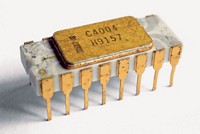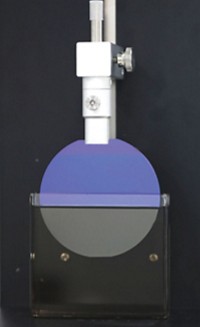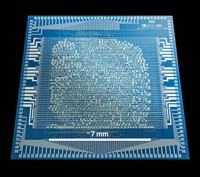Advertisement
Grab your lab coat. Let's get started
Welcome!
Welcome!
Create an account below to get 6 C&EN articles per month, receive newsletters and more - all free.
It seems this is your first time logging in online. Please enter the following information to continue.
As an ACS member you automatically get access to this site. All we need is few more details to create your reading experience.
Not you? Sign in with a different account.
Not you? Sign in with a different account.
ERROR 1
ERROR 1
ERROR 2
ERROR 2
ERROR 2
ERROR 2
ERROR 2
Password and Confirm password must match.
If you have an ACS member number, please enter it here so we can link this account to your membership. (optional)
ERROR 2
ACS values your privacy. By submitting your information, you are gaining access to C&EN and subscribing to our weekly newsletter. We use the information you provide to make your reading experience better, and we will never sell your data to third party members.
Materials
Researchers Shrink Carbon Nanotube Circuits
Electronics: New carbon nanotube transistors reach 20 nm—the size of current silicon ones
by Katherine Bourzac
April 1, 2014

For decades, the semiconductor industry has increased computing power by shrinking silicon transistors to cram more of the devices into processors. But in the next decade or so, the industry expects to push silicon to its physical limits. To continue to improve chip speed and performance, some researchers have proposed replacing silicon-based transistors with carbon nanotube ones. Now, in an important demonstration of the potential of this material, researchers have shown that they can make circuits using carbon nanotube transistors as small as the ones used in today’s best silicon chips (ACS Nano 2014, DOI: 10.1021/nn406301r).
Silicon transistors become unstable when they dip below 7 nm in size. Today, Intel’s best processors use 22-nm transistors; the next generation will be 14 nm. Researchers have built transistors in the lab using single nanotubes, which have a diameter of about 1 nm. Although these single-nanotube transistors have the size and performance to compete with silicon devices, inconsistencies in the quality of carbon nanotubes make it impossible to reliably fabricate and wire up large enough groups of the transistors to make complex circuits.
Inconsistencies in quality also plague researchers trying to make circuits using transistors consisting of tens or hundreds of carbon nanotubes. For digital logic, transistors need to be made of semiconductors that can be switched off and on to process the bits of information represented as 0s and 1s. When engineers make semiconducting nanotubes, they get a mixed bag: About one-third are metallic. These metallic nanotubes always carry current and cannot be switched off. Also, all nanotubes like to grow in a slightly tangled fashion that impedes the flow of charges and can interfere with the function of neighboring transistors.
Subhasish Mitra and H.-S. Philip Wong, electrical engineers at Stanford University, have found ways to deal with these issues. They make transistors out of arrays of carbon nanotubes grown on quartz using chemical vapor deposition. The quartz’s crystal lattice helps the nanotubes grow parallel to each other, keeping them untangled. They then use standard lithography to make transistors out of the nanotubes. To make sure none of the nanotubes in the transistors are metallic, the researchers apply a voltage to the devices in their off states, so that current passes only through the metallic nanotubes. Ramping up the voltage causes the metallic carbon nanotubes to break, taking them out of circuit.
In 2013, the Stanford group used these design tactics to make the first carbon nanotube computer out of 178 transistors (Nature 2013, DOI: 10.1038/nature12502). Each transistor was about 1 µm and made up of 10 to 200 nanotubes.
Now the Stanford group, with graduate student Max M. Shulaker, has shown they can go smaller, making carbon nanotube transistors as tiny as 20 nm. To fabricate the tiny devices, the team had to determine the voltage necessary to break down the metallic nanotubes on such a small scale.
These smaller transistors show improved performance compared to the devices used to make the nanotube computer in 2013: They can switch about 100 times faster and use about 0.04% as much power. That’s still not good enough to compete with silicon or high performance single-nanotube transistors. However, the researchers could assemble useful circuits with them, including a circuit for a light sensor.
To get the power and speed of the carbon nanotube circuits to a level where they can compete with silicon, Shulaker says, the researchers need to build their transistors from more densely packed arrays of carbon nanotubes. Transistors with more nanotubes would carry stronger signals, enabling the nanotube circuits to solve problems faster while using less power.
Aaron D. Franklin, at IBM’s T.J. Watson Research Center, in Yorktown Heights, N.Y., says the work shows the potential of carbon nanotubes for use in digital logic circuits. He points out that the materials and processes the team used are compatible with those used by the semiconductor industry. The researchers, Franklin adds, could easily shrink their transistors further if they had the equipment and resources found at industry fabrication labs.





Join the conversation
Contact the reporter
Submit a Letter to the Editor for publication
Engage with us on Twitter